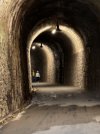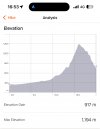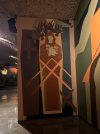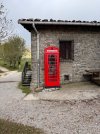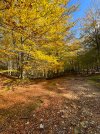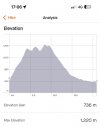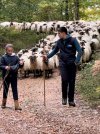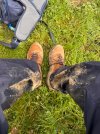- Time of past OR future Camino
- Several and counting...
These days, for various reasons, it takes me a lot of logistical planning at home to head off to walk, but I am happy to say everything has finally aligned and after looking at a lot of possibilities I have chosen the Camino Ignaciano. I tend to favour quieter routes and it does seem on the main Santiago routes the quieter routes (or quieter times) are getting fewer.
The Camino. Ignaciano is relatively recent - set up about 20 years ago - and retraces the journey of the Catholic saint, Ignatius of Loyola (there is also an Ignatius of Antioch) from his family home in Loyola in the Basque Country to Manresa which is near to Monserrat and Barcelona. He later continued onward to Rome. This was in 1522.
He is one of the saints who have had most impact on the Catholic Church both in terms of individual spirituality and theology and as founder of the Jesuits who have made major contributions in the fields of pastoral care, education and social engagement (especially with refugees). The Jesuit order, which flourished in his lifetime, met opposition for a while and flourished again to this day. Pope Francis is a Jesuit - the first Jesuit Pope.
There is a very useful website https://caminoignaciano.org/en/the-ignatian-way/ which has a corresponding (largish) book in both Spanish and an English version, and a recent small guide in the Bradt series by Murray Stewart, described as a ‘secular guide’. It is a very practical book with a nice ‘flavour’ of writing.
The website, and the books are excellent and necessary for planning as this is not a camino where you can just ‘turn up’. There are some long days and a few places where finding accommodation requires some judicious planning - because there nothing there!
You will notice that this subforum gets little traffic, but my own observation is that (sometimes) quality is in inverse proportion to quantity - in some forums. The quality here is high! So let me give a shout out to @MichaelSG whose magnificent blog of the full camino in 2015 - see the first post in this subforum - has been an invaluable encouragement.
I flew to Biarritz on Saturday morning and took a bus to San Sebastián and another to Loyola. Very simple and easy to find online.
Right at this moment I am about to set out on Day 2 - ‘the most difficult day of the Camino’ - from Zumarraga to Arantzatzu. The hour going back has given some useful daylight prior to 8am.
I will catch up when I can.
The Camino. Ignaciano is relatively recent - set up about 20 years ago - and retraces the journey of the Catholic saint, Ignatius of Loyola (there is also an Ignatius of Antioch) from his family home in Loyola in the Basque Country to Manresa which is near to Monserrat and Barcelona. He later continued onward to Rome. This was in 1522.
He is one of the saints who have had most impact on the Catholic Church both in terms of individual spirituality and theology and as founder of the Jesuits who have made major contributions in the fields of pastoral care, education and social engagement (especially with refugees). The Jesuit order, which flourished in his lifetime, met opposition for a while and flourished again to this day. Pope Francis is a Jesuit - the first Jesuit Pope.
There is a very useful website https://caminoignaciano.org/en/the-ignatian-way/ which has a corresponding (largish) book in both Spanish and an English version, and a recent small guide in the Bradt series by Murray Stewart, described as a ‘secular guide’. It is a very practical book with a nice ‘flavour’ of writing.
The website, and the books are excellent and necessary for planning as this is not a camino where you can just ‘turn up’. There are some long days and a few places where finding accommodation requires some judicious planning - because there nothing there!
You will notice that this subforum gets little traffic, but my own observation is that (sometimes) quality is in inverse proportion to quantity - in some forums. The quality here is high! So let me give a shout out to @MichaelSG whose magnificent blog of the full camino in 2015 - see the first post in this subforum - has been an invaluable encouragement.
I flew to Biarritz on Saturday morning and took a bus to San Sebastián and another to Loyola. Very simple and easy to find online.
Right at this moment I am about to set out on Day 2 - ‘the most difficult day of the Camino’ - from Zumarraga to Arantzatzu. The hour going back has given some useful daylight prior to 8am.
I will catch up when I can.
Last edited:










